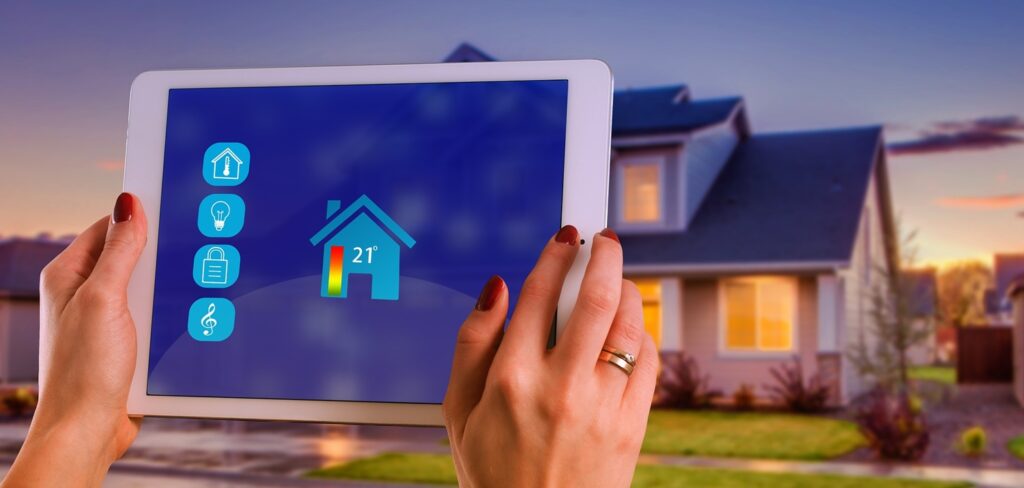How smart is the average smart home, really? We use the term ‘smart home’ to describe all sorts of devices that rely on automation and artificial intelligence to do what they do. Suffice it to say that technology is nowhere near its limits. Tomorrow’s smart home could be even smarter thanks to some ongoing work in the field of biometrics.
Imagine buying a newly built home. It could be anywhere – say Las Vegas, Nevada. Your new home is equipped with a state-of-the-art security and home automation system from Vivint Smart Home. The system utilizes biometric identification for security purposes.
What would that mean to you? You might need to provide a fingerprint or facial scan to unlock the front door. Your system might analyze your voice with every spoken command, to ensure that someone without authorization cannot alter your programming. All of that, and more, is coming.
Biometric ID for Unemployment

We have been talking about biometric identification for computer access for quite some time. You might even use a smartphone or laptop with built-in biometric ID technology. But thus far, the technology has been limited due to the inherent limits of the software behind it. That is changing, and changing quickly.
Nevada’s Department of Employment Training and Rehabilitation, the agency responsible for unemployment claims in the state of Nevada, recently announced the launch of a new pilot program designed to root out fraud in the unemployment system. The pilot requires unemployment applicants to use biometric ID to access the state’s system.
Consumers agreeing to be part of the pilot log on to the state system and are subjected to a facial scan. This is accomplished through the on-board camera of either a smartphone or laptop computer. Once the scan is complete, data is analyzed and stored in the system. Future logon attempts force the system to match its data with the new data coming from the consumer’s device before allowing access.
Officials have said that the key to reducing unemployment system fraud is better identification. And with so many things moving online, improving the ID paradigm requires finding better ways to identify online users. Biometric technologies are one way to do that.
Biometric Data at Home

Biometric identification could easily be deployed to make a home more secure. Earlier this post discussed relying on facial recognition to open the door or voice recognition to issue commands to a smart home system. Yet these two applications barely scratch the surface. Biometric data can be used in a whole host of ways at home.
Have you heard of Amazon’s new Halo platform? The platform pairs wearable devices with AI-powered software to give consumers more information about their own health. Wear a Halo band around the house, and you start discovering some new things about yourself and your lifestyle. For example:
- Halo can help you figure out if you are really getting as much exercise as you think you are.
- It can monitor your sleep just in case you might be unknowingly suffering from sleep issues.
- It can help you better understand your stress and anxiety levels by analyzing your voice as you speak.
Maybe there are some things about your new Las Vegas home that trouble you. Perhaps the home is causing undue stress that is interrupting your sleep, causing you to overeat, and making you feel rundown. Your new biometric system could alert you to those things.
An Interactive Smart Home

Now imagine if your new Las Vegas home were connected to a variety of other institutions through your smart home system. For example, what if your doctor’s office could receive the biometric data your wearables collect around the house? Could that lead to better health?
In theory, yes. Artificially intelligent software can take all of the data your wearables collect and constantly crunch it. As anomalies occur, the system can turn to predictive analysis to determine whether or not you are at risk of certain diseases, health conditions, and the like. You could be flagged by the system for medical intervention should the data show something amiss.
On the one hand, this sort of interactive system seems entirely too intrusive. After all, who wants their home to be so smart and interconnected that outside entities can monitor nearly every aspect of life 24/7? On the other hand, such a capable home could revolutionize the way healthcare services are delivered.
From the Cloud to the Edge

Though biometric technologies are rapidly improving, there is a monkey wrench in the works. That monkey wrench is data security. The one thing new smart homes have to guarantee is security. Otherwise, they are more of a liability than an asset.
Current technology requires processing everything in the cloud. There just isn’t enough raw processing power in desktop computers and smartphones to handle biometric data and all of its implications. Even basic DIY smart home systems rely on the cloud for doing what they do.
Why is this a problem? Because collecting data from one location and sending it to an off-site cloud for processing opens the door to data theft. Think of it like transferring money from a local small business to a bank. From the time the business owner leaves his office to the moment the cash makes it to the bank vault, there are plenty of opportunities for theft.
This same paradigm exists in the data world. So now the goal is to move away from the cloud and toward edge computing. What is edge computing? It is the principle of keeping data as close to home as possible. It is all about increasing processing power at the local level so that data does not have to go to the cloud.
Smart homes are getting smarter. In the near future, the smartest homes will rely on biometric information for security, health monitoring, and so much more. At some point, they will all be intrinsically linked to our homes through the technology that powers them.
